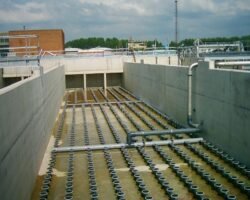What Is Chemical Oxygen Demand In Wastewater Treatment

Introduction
In the realm of environmental engineering and wastewater treatment, monitoring and reducing pollutants is paramount. One critical parameter in evaluating the quality of wastewater is the Chemical Oxygen Demand (COD). Understanding COD is imperative for professionals in waste management, environmental science, and related fields because it provides essential information about the amount of organic matter present in the water.
What Is Chemical Oxygen Demand?
Chemical Oxygen Demand is a measure of the amount of oxygen required to chemically oxidize organic and inorganic compounds in water. Essentially, it reflects the potential of water to consume oxygen, indicating the level of pollution by organic substances. Unlike Biological Oxygen Demand (BOD), which estimates the amount of biodegradable organic matter, COD reflects the total content of all oxygen-consuming pollutants. This includes not only biodegradable materials but also substances that organisms cannot break down.
The Importance of COD in Wastewater Treatment
1. Pollution Control
COD is a critical measurement of water quality because it directly correlates to the contaminant levels in wastewater streams. High COD levels suggest a high level of pollutants that can affect aquatic life and water quality. By measuring COD, facilities can assess how effectively their treatment processes are at reducing pollutants.
2. Regulation and Compliance
Governments and environmental agencies enforce strict regulations on wastewater discharge. These regulations often stipulate permissible COD levels. Thus, monitoring COD is necessary for compliance with these legal standards and to avoid potential fines or shutdowns.
3. Efficiency of Water Treatment Plants
Monitoring COD helps in evaluating the efficiency of a wastewater treatment plant. By comparing the COD levels of influent and effluent water, operators can determine the efficacy of their treatment processes and make necessary adjustments.
How COD Is Measured
Measuring COD typically involves a chemical oxidation process using a strong oxidizing agent. The procedure generally entails:
-
- Acid Digestion: The sample is digested in a strong acid solution, which helps in breaking down complex molecules.
- Acid Digestion: The sample is digested in a strong acid solution, which helps in breaking down complex molecules.
-
- Oxidation with Potassium Dichromate: This is the most common method. A known quantity of potassium dichromate in acidic solution oxidizes the organic matter present in the sample.
- Oxidation with Potassium Dichromate: This is the most common method. A known quantity of potassium dichromate in acidic solution oxidizes the organic matter present in the sample.
-
- Heating: The solution is heated to enhance the oxidation reaction.
- Heating: The solution is heated to enhance the oxidation reaction.
-
- Titration: Finally, the amount of unreacted dichromate is determined, usually by titration with ferrous ammonium sulfate. The difference between the initial and final dichromate concentration corresponds to the COD.
Factors Affecting COD
1. Types of Organic Compounds
Different organic compounds have different oxidation potentials. Complex molecules typically consume more oxygen to oxidize completely compared to simpler ones.
2. Inorganic Compounds and Their Effect
Certain inorganic substances, such as nitrites and sulfides, may also contribute to COD, as they can be oxidized under the test conditions. Their presence might result in elevated COD readings even in cases where organic content is low.
3. Sample Handling
Improper handling of samples, such as delays in testing or exposure to air, can alter COD readings. It’s crucial to maintain sample integrity to obtain accurate measurements.
COD and BOD: Understanding the Difference
COD and BOD are both measures of the organic pollutants in water but they capture different aspects. While COD applies to all oxygen-demanding substances, BOD focuses only on the biodegradable fraction. BOD tests require a longer time to complete, typically five days, as they depend on microbial action to break down organic matter. Consequently, COD is more widely used for quick assessments, although both parameters are crucial for comprehensive water quality monitoring.
Applications of COD in Wastewater Treatment
1. Monitoring Industrial Effluents
Industries often produce wastewater with high COD concentrations, particularly those involved in food processing, pharmaceuticals, and textiles. Monitoring COD helps these sectors regulate their discharge and modify processes to minimize environmental impact.
2. Biochemical Treatment Processes
In wastewater treatment facilities, COD removal is often achieved through biological treatment processes. By tracking COD at different stages, operators can optimize these processes, such as activated sludge systems or anaerobic digesters, to ensure maximum pollutant removal.
3. Identifying Pollution Sources
COD measurements can help trace the origins of pollution in cases where contamination sources are unclear. By analyzing COD levels at various points in a waterway or pipeline, engineers can pinpoint where excessive pollutants are entering the system.
Measuring COD: Methods and Innovations
Various methods and technological innovations have emerged to improve the measurement and application of COD in wastewater systems:
1. Closed Reflux Titrimetric Method
This is the most traditional technique, involving a strong acid digestion followed by oxidation with potassium dichromate. The reaction occurs under reflux conditions to prevent loss of volatile organic substances, and the result is quantified through titration.
2. Spectrophotometric Methods
Spectrophotometry offers a faster alternative by measuring the absorbance of light by the dichromate solution. This method reduces reliance on titration and allows for more rapid analyses, which is particularly useful in routine monitoring and automated systems.
3. Online COD Sensors
In recent years, the development of online COD sensors has revolutionized wastewater treatment monitoring. These sensors provide real-time COD data, empowering operators to respond swiftly to changes in water quality and optimize treatment processes on-the-fly.
Challenges in COD Measurement
Despite being an extremely useful metric, COD measurement is not without its challenges:
1. Interference by Chloride Ions
The presence of high chloride concentrations can interfere with the dichromate method, as they consume dichromate during the titration process, leading to overestimated COD values. This issue can be mitigated by adding mercury sulfate to the reaction, which binds to chloride ions.
2. Toxic Reagents
The chemicals used in COD tests, such as strong acids and mercuric sulfate, require careful handling and disposal due to their toxic nature. This presents safety and environmental concerns that need to be managed through appropriate protocols.
3. Cost and Complexity
COD testing, particularly with standard approaches, can be resource-intensive and complex compared to simpler tests like turbidity or pH measurement. This can be a barrier for smaller facilities with limited resources.
Future Prospects and Innovations
Continuous research and innovation are leading to more efficient, less hazardous, and cost-effective methods for measuring and managing COD in wastewater treatment:
1. Green Analytical Techniques
There’s a push toward developing more environmentally friendly reagents that could enhance the safety and ecological impact of COD testing.
2. Advances in Sensing Technologies
The evolution of blockchain, artificial intelligence, and machine learning is paving the way for predictive analytics in wastewater monitoring, enabling anticipatory management of COD levels and enhancing treatment efficacy.
3. Integration with IoT
Internet of Things (IoT) technologies are introducing new frontiers in data collection and process control. By integrating COD sensors with IoT networks, facilities can harness robust data analytics for more informed decision-making.
Conclusion
Chemical Oxygen Demand is undeniably a cornerstone parameter in the assessment and management of wastewater quality. It encapsulates the broader spectrum of pollutants that can compromise water systems and pose risks to public health and the environment. Through vigilant monitoring and innovative solutions, industries and municipalities can effectively harness COD data to safeguard aquatic ecosystems and comply with stringent regulations. As technological advancements and sustainability priorities continue to shape the future of wastewater treatment, the lens through which we view and apply COD will undoubtedly expand, driving more refined approaches to water management across the globe.



